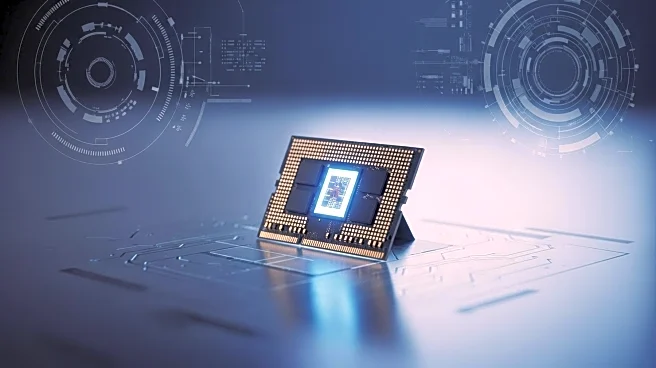What is the story about?
What's Happening?
Researchers at Fudan University in Shanghai have developed a memory chip that is just 10 atoms thick, which could significantly enhance the storage capacity of electronic devices. This breakthrough involves integrating ultra-thin 2D materials, such as graphene, with conventional CMOS chips. The team overcame previous challenges by using a layer of glass to separate the 2D chip from the traditional CMOS chip, allowing for better integration. The prototype achieved over 93% accuracy in tests, although it is not yet ready for consumer use. This development represents a promising step towards more compact and efficient chip designs.
Why It's Important?
The advancement of ultra-thin memory chips could revolutionize the electronics industry by enabling devices to store more data in smaller spaces. This is particularly significant as the demand for more powerful and compact devices continues to grow. The use of 2D materials like graphene could overcome current limitations in silicon-based chips, potentially leading to further miniaturization and improved performance. This technology could benefit various sectors, including consumer electronics, data centers, and emerging fields like quantum computing, by providing more efficient and powerful processing capabilities.
What's Next?
For this technology to become commercially viable, further research and development are needed to improve the reliability and integration of these ultra-thin chips into existing manufacturing processes. The next steps involve industrializing the separation process using glass layers and enhancing the accuracy and durability of the chips. If successful, this could lead to widespread adoption in the electronics industry, driving innovation and potentially reducing costs for consumers.
AI Generated Content
Do you find this article useful?
















